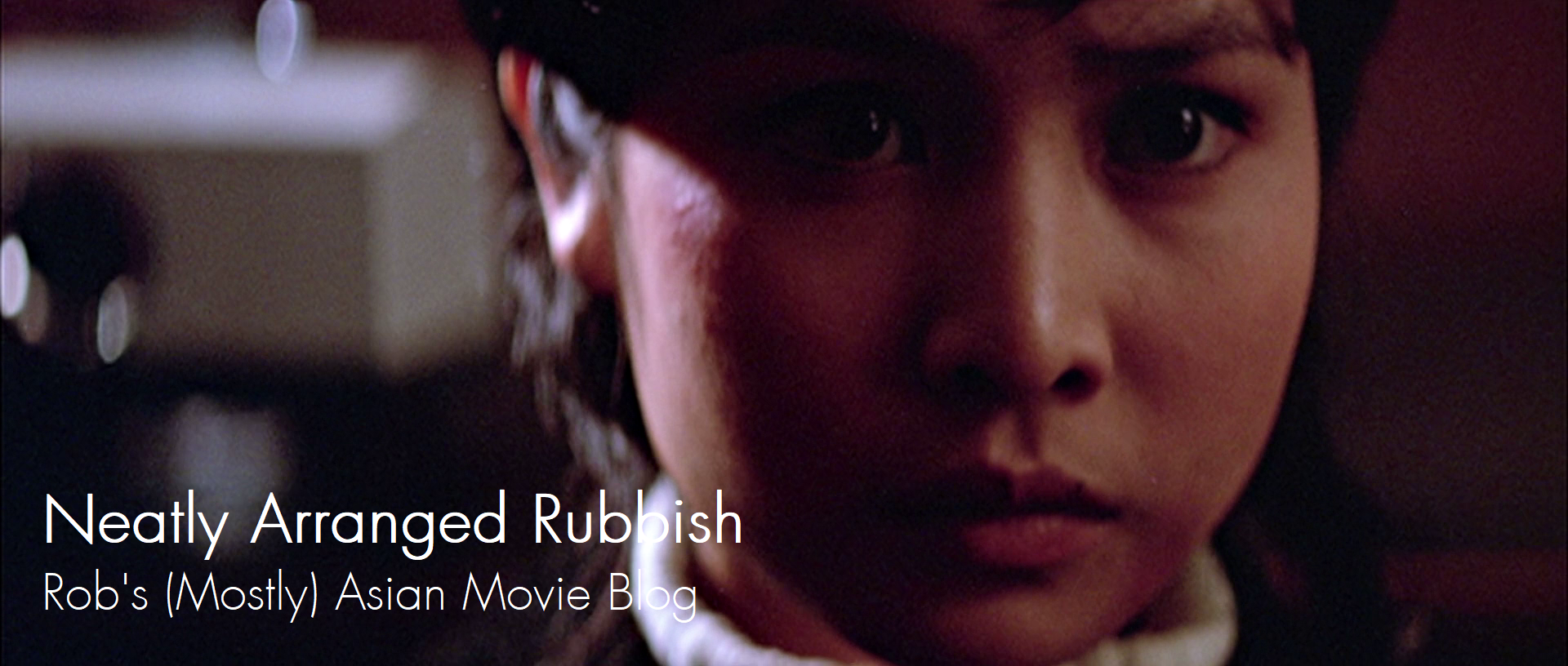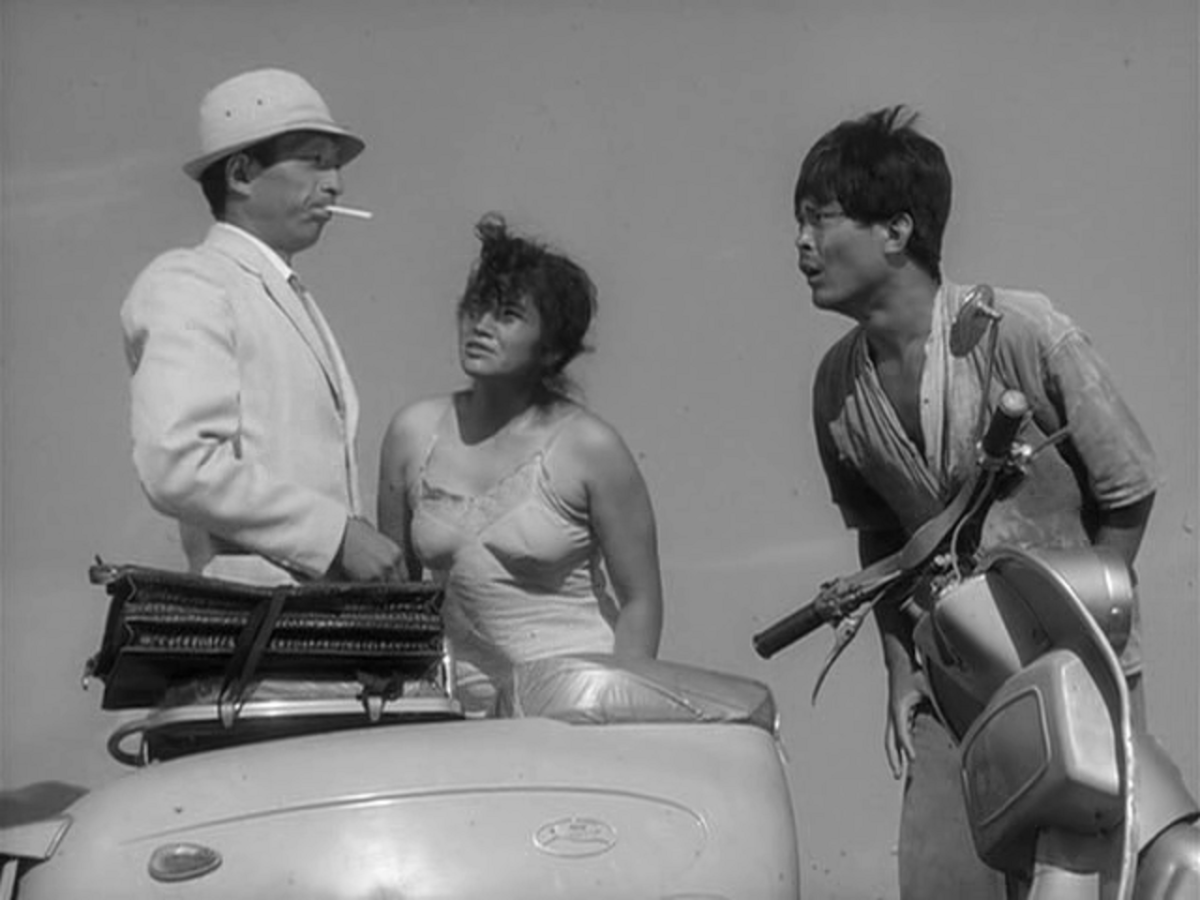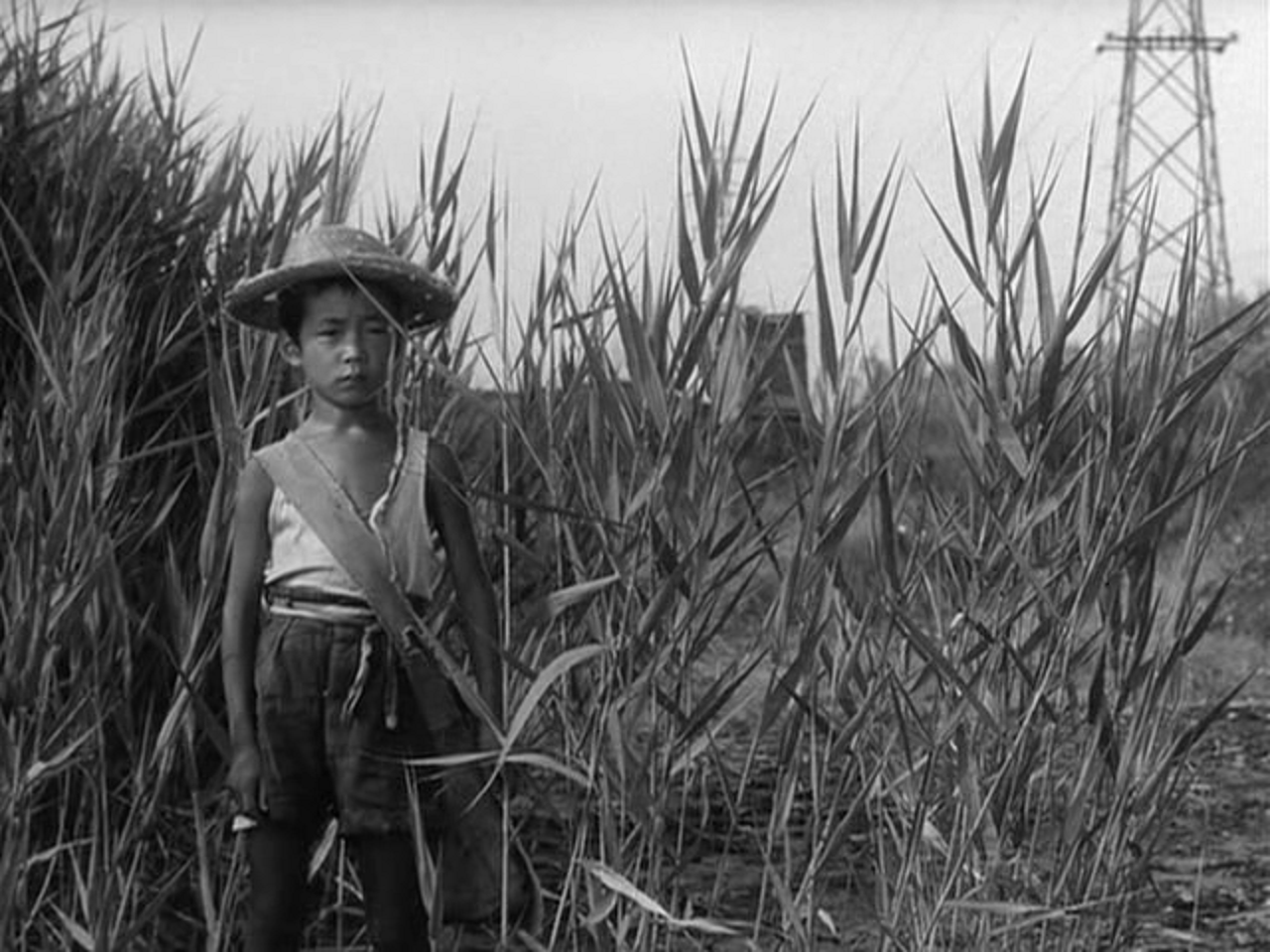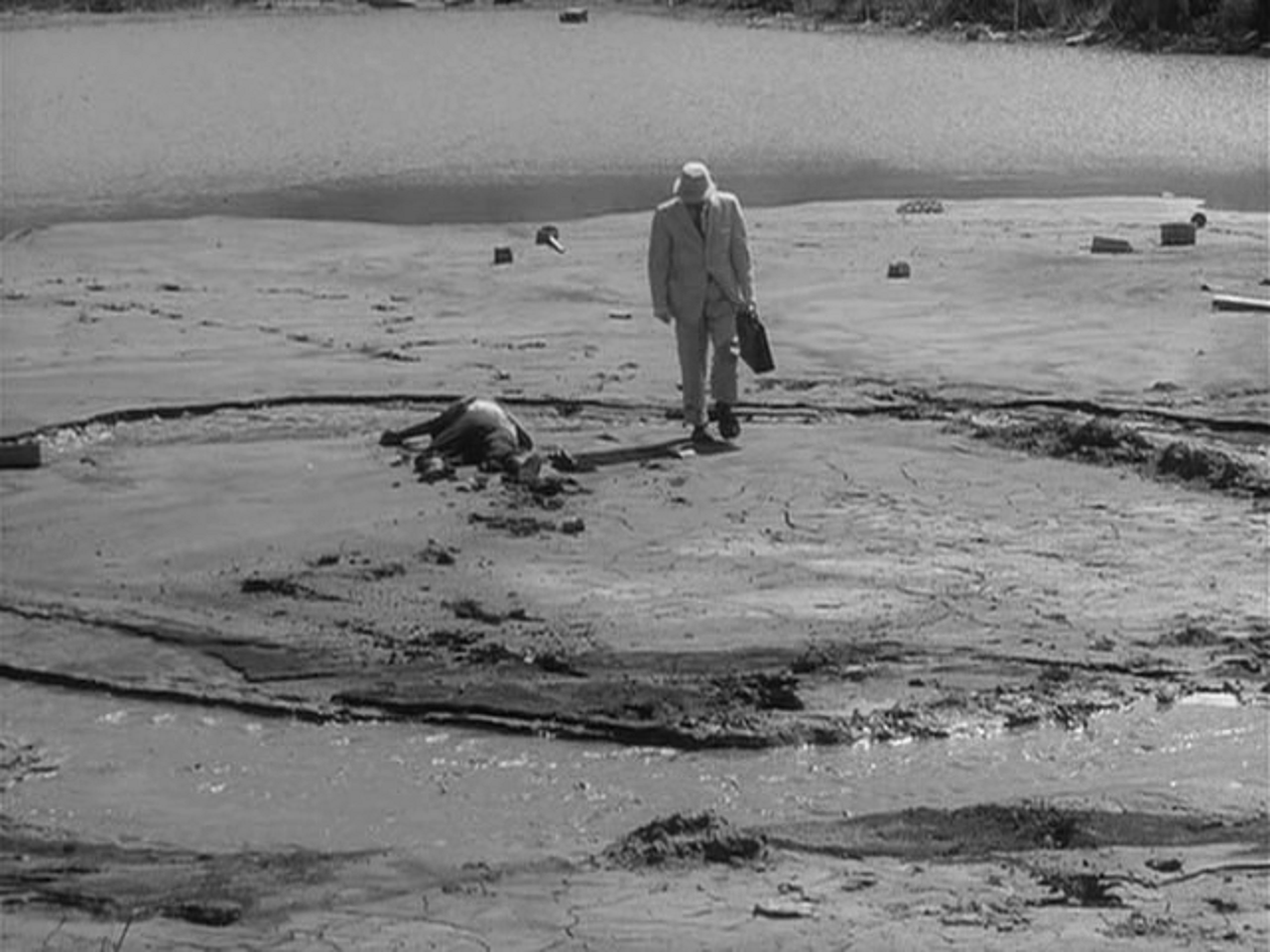Last Updated on October 6, 2020 by rob
A miner (Hisashi Igawa) is murdered by a man in a white suit (Kunie Tanaka) but returns as an understandably upset ghost determined to find out why. His search leads him to his identical double, Otsuka (also played by Igawa), who’s the union chief of a local mine embroiled in a row with a rival union headed by Toyama (Sen Yano). When Otsuka sees the dead man he realises the killer’s mistake and invites Toyama to meet him so he can explain how both of them are in mortal danger. But the discovery of another victim sets both men against each other in a fight to the death.
Surrealism and absurdist humour get an agreeable workout in this blackly comic view of employee/employer relations which keeps spinning surprises along with a spiralling body count. Igawa is very likeable in dual roles here and we share his indignity at his untimely demise. The cautionary warning he gets from a fellow ghost that he shouldn’t try to find out the reason for his death because he won’t like what he finds turns out to be bitterly prophetic. Indeed Igawa’s character, far from being at the centre of things as he believes discovers himself to be nothing more than an insignificant bit player in a dispute between big business and warring miner’s unions. His inability to be anything more than a witness to what subsequently unfolds – especially in the final scene as he and the woman plead with The Man In The White Suit to explain why they had to die (them being ghosts he of course can’t hear or see them) – really socks over the unfairness of a world where people are manipulated by forces beyond their control.
Igawa also does well as the sober and sensible union leader, Otsuka, whose well-meaning attempts to save the situation collapse under a series of mordantly amusing misunderstandings with his rival, Toyama. After Otsuka and Toyama have killed each other the director mockingly cuts from the bodies to a bandanna reading ‘Unite’! and by the film’s end there are more ghosts wandering unhappily around than there are people. The world Teshigara creates here – the abandoned town, a shop with its racks of unsold toys and swarms of ants crawling over the displays of cakes and sweets, the blasted and decaying industrial landscapes with their mud flats and rivers and everywhere this blinding white heat, has a distinctly (JG) Ballard-ian feel to it. But unlike Ballard there’s heart, a sympathy for the characters and the predicament they find themselves in.
In fact there’s both pathos and comedy as the newly deceased come to terms with their new state. Igawa’s ghostly miner, far from finding himself alone, discovers the abandoned mining town to be full of ghosts that he can see but the living can’t. It’s never stated directly but we can presume these ghosts are either miners that have been killed in accidents or those simply killed by the company. Their listless state – wandering up and down the main street, some mimicking the actions they performed in their former lives – exemplifies the film’s tragic/funny tone. At any rate it’s also a neat visual metaphor for the literal and figurative ghosts who populate this story.
In a bitterly ironic touch Sumie Sasaki’s shopkeeper, who stays on as the abandoned mining town’s sole inhabitant because she’s waiting for a letter from her lover, receives the postcard when she’s already a ghost and is therefore unable to turn over the postcard to read what’s written on it! The only one to emerge from all this alive is Otsuka’s infant son (Kazuo Miyahara) who gets to witness both his father and his father’s double murdered in front of his eyes and who has just enough survival instinct in him to recognise that flight from this hellish landscape is the only option. And speaking of landscapes it can’t be emphasised enough how striking Teshigahara’s direction and Hiroshi Segawa’s cinematography renders the world we see here. The pair have a knack for unsettling close ups and striking long shots that combine to evoke a vaguely queasy, disorientating quality. They manage to make the world here look both familiar and alien. No mean feat that.



